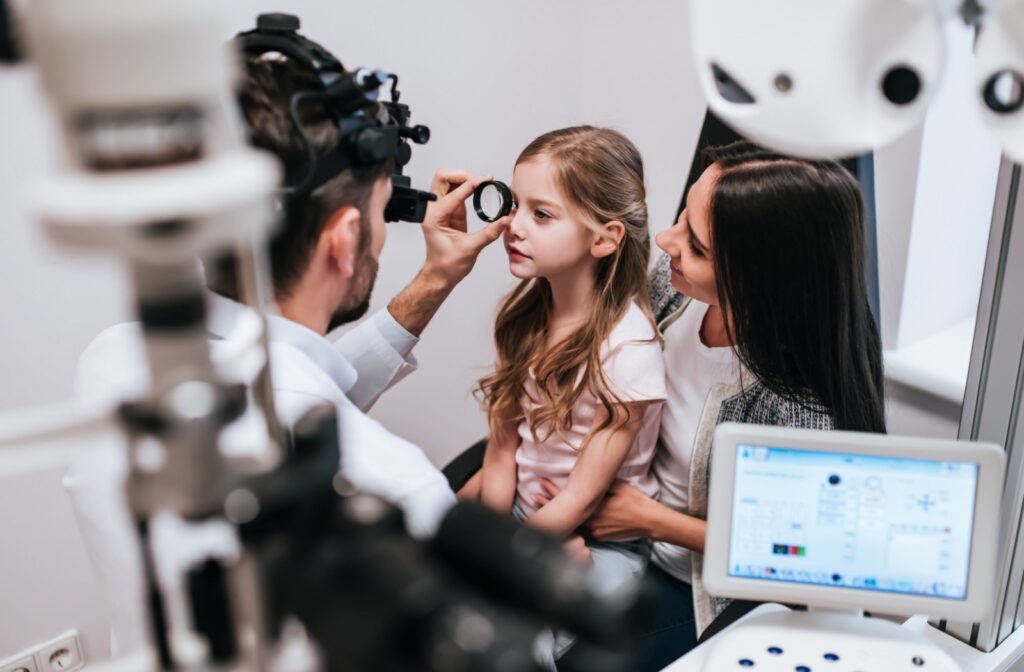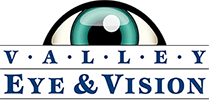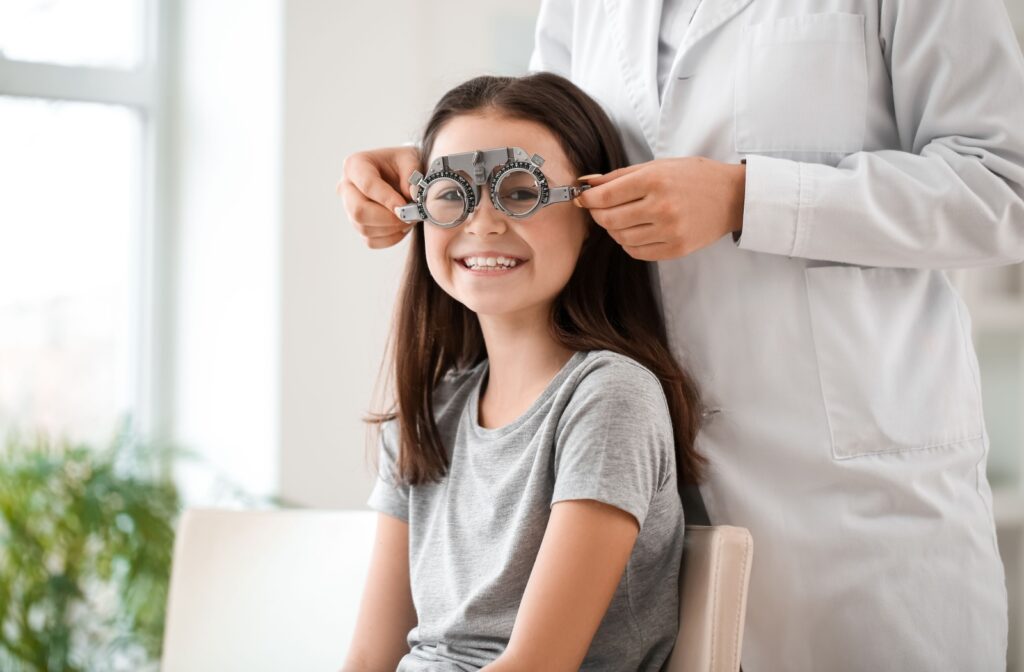Myopia, also known as nearsightedness, is among the most common vision conditions affecting both children and adults. If you or your child struggles to see clearly at a distance, myopia is likely to blame.
Many parents also wonder whether myopia can be reversed. The short answer: no, myopia can’t be reversed. However, that doesn’t mean you can’t be proactive. With the right strategies, myopia can be treated and its progression can be slowed.
What Causes Myopia?
Myopia occurs when the eyeball becomes too long from front to back, or when the cornea becomes too curved. This elongation causes incoming light to focus in front of the retina (the part of your eye that sends visual signals to the brain), rather than directly on it.
As a result of this misfocused light, objects in the distance appear blurry, while near vision typically remains clear. Over time, if unmanaged, elongation of the eye can continue, making distance vision progressively worse.
Several key factors contribute to the development and progression of myopia:
1. Genetics
Myopia tends to run in families. If one or both parents are nearsighted, there’s a significantly higher chance their child will also develop myopia. Genetics not only influence whether myopia occurs, but can also affect how severe it becomes.
2. Environment & Lifestyle
- Excessive near work: Activities that require focusing up close, like reading, studying, or using digital devices, can increase strain on the eyes, especially when done for extended periods without breaks.
- Limited Outdoor Time: Research has shown that children who spend more time outdoors are less likely to develop myopia. Natural light exposure and the opportunity to focus on distant objects help support healthier eye development.
- Early Use of Screens: Children today are exposed to screens earlier and more frequently than previous generations. This screen time often replaces outdoor play and contributes to the increasing rates of myopia in kids.
Myopia often begins between the ages of 6 and 12 and tends to progress while he eyes are still developing. It typically stabilizes in the early twenties, though, for some people, especially those with high myopia, progression can continue into adulthood.
Early diagnosis and proactive management are essential to help slow down this progression and reduce the risk of future eye health complications, such as retinal detachment, glaucoma, or myopic macular degeneration.
Why Can’t Myopia Be Reversed?
Because myopia is caused by the physical lengthening of the eyeball, it’s a structural change that can’t simply be undone. The eye’s shape doesn’t return to normal on its own, which is why true “reversal” of myopia isn’t possible.
It’s possible that you may have heard about eye exercises or alternative methods like the Bates Method as ways of treating myopia, but the scientific evidence suggests that these approaches do not work. That’s why prevention and management are so important, especially for children.
How Is Myopia Treated?
While myopia can’t be reversed, it’s very manageable. Corrective lenses are the most common way to restore clear vision:
- Glasses: Prescription glasses are a safe, effective, and easy way to correct distance vision. They come in many styles and can include special coatings to protect your eyes.
- Contact Lenses: Contacts offer a natural field of view and are great for active lifestyles. Newer options like daily disposables are convenient and hygienic.
- Laser Eye Surgery: For adults with stable prescriptions, laser surgery reshapes the cornea to improve focus. Not everyone is a candidate, so a consultation with an eye surgeon is necessary.
Slowing Myopia Progression in Children
Early intervention is key when it comes to myopia in kids. Slowing the progression of myopia can reduce the risk of developing high myopia, which is linked to serious eye health problems.
Here are effective myopia control methods:
- Specialty Contact Lenses: Orthokeratology (ortho-k) lenses are worn overnight to gently reshape the cornea, providing clear vision during the day without glasses or contacts. Multifocal soft lenses are another option designed to slow eye growth.
- Low-Dose Atropine Drops: These prescription eye drops, used daily, have been shown to slow the eye’s elongation in many children.
- Increased Outdoor Time: Studies show that kids who spend more time outside have a lower risk of myopia progression.

Tips to Reduce Myopia Risk & Support Eye Health
While myopia can’t always be prevented, you can reduce its impact with a few simple habits:
- Encourage your child to spend at least 1-2 hours outdoors daily.
- Limit continuous close-up screen time and use the 20-20-20 rule: every 20 minutes, look at something 20 feet away for 20 seconds.
- Make sure kids have proper lighting when reading or doing homework.
- Provide a healthy diet rich in vitamins A, C, E, and omega-3 fatty acids to support overall eye health.
- Schedule regular eye exams to catch myopia early and monitor progression.
When to See an Eye Care Professional
If you notice your child squinting, sitting too close to screens, or struggling to see distant objects clearly, it’s time for an eye exam. Early diagnosis allows your eye doctor to recommend treatment and possibly slow myopia progression before it worsens. Though myopia can’t be reversed, it can be effectively managed with proper care. At our two eye clinics in Washington, we specialize in comprehensive eye exams and myopia management tailored for your family’s needs. Contact us today to schedule an appointment and take the first step toward clearer, healthier vision.


